A giant tomato, the size of the fruit of which is amazing - we grow our own tomato "Miracle of the garden"
Tomatoes with large fruits are always popular all over the world. Such tomatoes have a pronounced sweet taste and aroma. They are used mainly for preparing salads and hot dishes.
Tomatoes are considered large-fruited, the fruit weight of which exceeds 400 g. Compared to the Miracle Garden tomato, most large varieties look miniature. After all, the weight of the berries of this variety of tomatoes varies between 500-1500 g. How to grow giant tomatoes on your site - read on.
The content of the article
General information about the variety
 The garden miracle tomato is an achievement of domestic breeders. It belongs to the exhibition varieties. It boggles the mind with the size of its fruits.
The garden miracle tomato is an achievement of domestic breeders. It belongs to the exhibition varieties. It boggles the mind with the size of its fruits.
Garden Miracle seeds are not available in all stores. It is a rare variety as the fruit of this tomato contains few seeds.
Features of the Garden Wonder
The main feature of the Garden Miracle tomatoes are its fruits. They have impressive dimensions - one weighs up to 1.5 kg. Make sure of this by looking at the photo.
Important! Gardeners' reviews indicate that the first fruits on the bush reach a mass of 1 kg or more. The following weights vary between 500-800 g.
Tomatoes of this variety are red on the inside and outside. There are no white and green spots in the pulp. The taste is sweet, with a subtle sourness.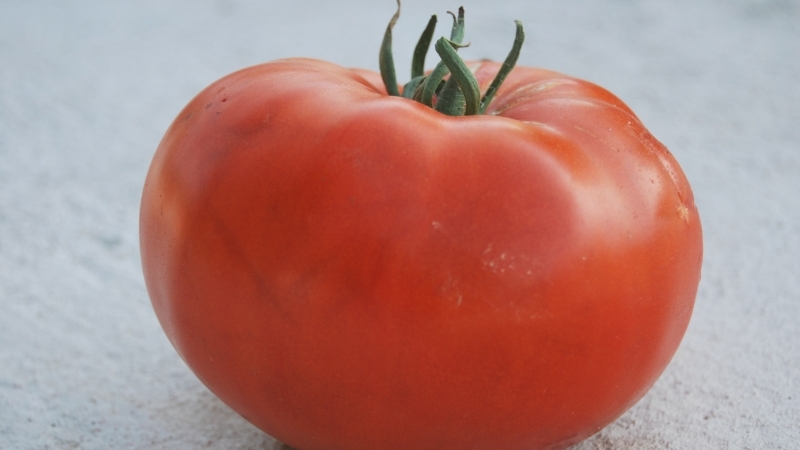
Specifications
The miracle of the garden has impressive performance. Therefore, this variety is often presented at exhibitions.
Characteristics and description of the Miracle garden variety:
| Parameter | Indicators |
| Bush type | Indeterminate. It grows up to 1.5 m. It has a powerful thick stem. Ordinary tomato leaves, green. The bushes are covered with a lot of greenery. One fruit develops from each flower. Pickling and garter are necessary - heavy fruits can break the stem without support. |
| Growing method | They are grown in protected and unprotected soil. Outside the greenhouse, it can grow even in central Russia. |
| Yield | High. There are few fruits on the bush, but due to their weight, 7-10 kg of berries are harvested from one bush, and from 1 sq. m - up to 30 kg. |
| Fruit | Giant. The weight of one berry varies between 500-1500 g. The fruits have a rounded, flattened shape. The base has a pronounced ribbing. The color of the glossy skin is red. Tomatoes are red inside, without white and green spots at the base. Fleshy but juicy. The taste is sweet, with a mild sourness and a light fruity aftertaste. There are many chambers inside with a small amount of seeds. |
| Transportability | Average. The fruit has a thin and firm skin. Stored in the refrigerator for up to 2 weeks. |
| Ripening terms | Medium early grade. The first fruits ripen 100 days after germination. |
| Disease resistance | Average. Tomato has a lower immunity to major diseases than hybrids. Therefore, sometimes the Garden Miracle tomatoes infect viruses and fungi. |
Growing seedlings
The seeds are sown two months before the soil temperature reaches the optimum level for growing tomatoes. In most regions, work with planting material begins in March.
The planting time of seedlings depends on the region:
- in cities with a southern climate, seeds are sown in the second half of February or early March;
- in the middle lane - in the second half of March or early April;
- in the northern regions - in the first half of April.
If you plan to grow tomatoes in a greenhouse, start sowing seeds a few weeks earlier.
Seed preparation
The first stage in preparing seeds for sowing is disinfection. This will prevent further infestation of the plants.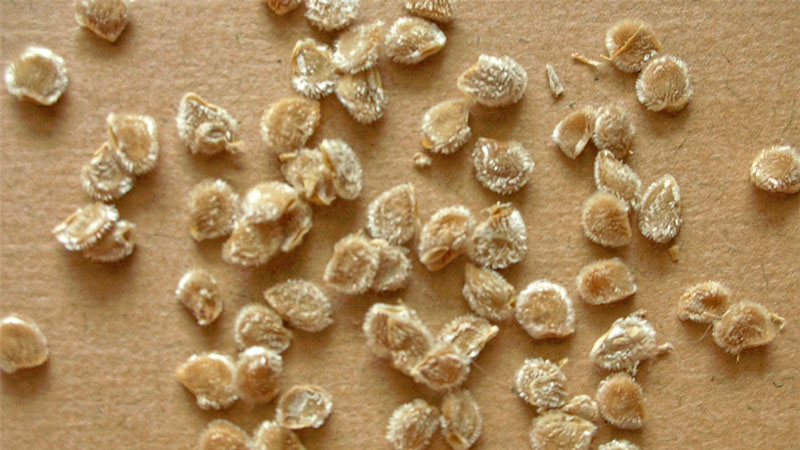
Seed disinfection methods:
- The seeds are soaked in a weak solution of potassium permanganate for half an hour. Then washed under running water.
- A teaspoon of soda is dissolved in 100 ml of water. The planting material is soaked in the solution for a day. This product stimulates the growth of tomatoes.
- Aloe juice is diluted with an equal amount of water. Planting material is soaked in it during the day. This composition also stimulates plant growth.
- Add 1 drop of solution or 0.5 tsp to 100 ml of water. powder "Fitosporin". Planting material is soaked in the tool for 2 hours. This method not only disinfects the seeds, but also accelerates their germination.
When a solution of potassium permanganate is used to disinfect seeds, they are additionally treated with a growth stimulant. As such a remedy, take "Fitosporin" or another drug with a similar effect.
Advice... To check the suitability of seeds for planting, before disinfection, they are soaked for half an hour in a saline solution. Those seeds that have surfaced will not germinate.
Selection of soil and containers
As a container for planting tomatoes, not only purchased trays and boxes are used, but also improvised materials. For these purposes, plastic dishes for food, packaging for semi-finished products, trays for meat, poultry and mushrooms, etc. are suitable.
Individual containers are used for picking plants. Their volume must be at least 300 ml.
Advice... Since the Miracle of the Garden is a rare variety, it is beneficial to use peat tablets for its cultivation. They will provide the best seedling conditions.
They prepare the soil for seedlings on their own or buy ready-made ones. For tomatoes, choose a light soil.
For self-preparation of the soil, equal proportions of black soil and humus are taken as a basis. To facilitate the mixture, sand, sawdust, peat or coconut substrate are added to it.
The soil must be disinfected - calcined in the oven or poured with boiling water.
The containers also need to be disinfected. To do this, they are soaked for half an hour in a dark pink solution of potassium permanganate.
Sowing planting material
Drainage is poured into a container for growing tomatoes. In this role, shell rock, small pebbles or crushed expanded clay can act. Pour the prepared soil mixture on top.
Seeds are spread on the soil in rows, the distance between which should be at least 2 cm. 2 cm is also left between the seeds.
Sprinkle the seeds on top with a centimeter layer of earth. The soil is moistened with warm water from a spray bottle and covered with glass or foil.
The container is placed in a warm place, for example, near a battery. The temperature in it must be at least 23 degrees.
Seedling care
To grow healthy and robust seedlings, you need to know how to care for them. The list contains basic rules:
- After the seeds germinate, the box with the seedlings is moved to a well-lit place. There is usually not enough light in the early spring, which is why gardeners use fluorescent lamps.
- Before seed germination, check soil moisture daily. If it is dry, it is moistened with a spray bottle; if too wet, ventilate. When the first shoots appear, they begin to moisten the soil from the syringe so that the liquid does not get on the greens.
- After the appearance of the first shoots, the seedlings begin to air. To do this, open the glass daily for several hours. The greenhouse is completely disassembled 10 days after seed germination.
- As soon as the first real leaves appear, the tomatoes dive into individual containers.Pots and soil for picking plants are also disinfected. Water the seedlings no earlier than 10 days after transplanting.
- The first feeding is done two weeks after picking the plants. Then the tomatoes are fed every two weeks. To do this, use vermicompost, taking half the dose indicated in the instructions for one plant.
- Two weeks before planting tomatoes in the ground, they begin to harden. For this, the seedlings are taken out into fresh air during the warm season. For the first time, the plants stay outside for 15 minutes, then the time is gradually increased.
How to grow tomatoes
Tomatoes are planted in the ground after the soil warms up: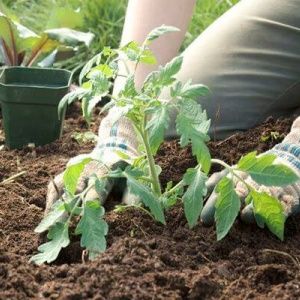
- in the southern regions - in late April or early May;
- in the middle lane - at the end of May;
- in the northern regions - in the first half of June.
Planting seedlings in the greenhouse begins earlier by several weeks. In protected ground, tomatoes are not afraid of night frosts.
Transplanting seedlings to a permanent place
Before transplanting seedlings into the ground, they need to be prepared. To do this, three days before the pick watered and feed.
In the fall, they prepare the soil: they dig it up, clean it of plant residues and mix it with crushed eggshell, compost and alkali.
In the spring, the rows are prepared again. The soil is dug up again, cleaned of plant roots and ash is added. Disinfect by watering with a solution of potassium permanganate, three days before planting the plants.
Tomato holes are dug in rows. For 1 sq. m place no more than 4 plants. A solid support or trellis is installed near each hole.
Seedlings are taken out of the pots along with a lump of earth and placed in the holes in the center. The holes are filled with warm water and covered with earth.
Tomato care rules
The garden miracle tomatoes are sure to stepchildren. They are formed into one or two stems. The more stems, the smaller the fruit and the more abundant the harvest.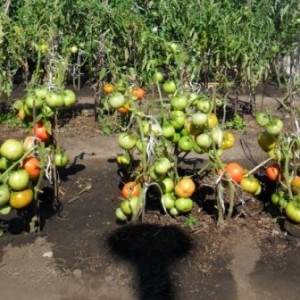
Tying tomatoes is mandatory. As the bush grows, the free parts are attached to the support.
Water the plants as the soil dries... To do this, use settled water at room temperature. Water should not come into contact with greens; tomatoes are watered only at the root. The best time to water is in the evening or earlier in the morning.
Two weeks after planting in open ground, the seedlings are fed for the first time. Before flowering, mineral and organic fertilizers are alternated every two weeks. Some gardeners mix soil with long-acting mineral granules even before planting tomatoes.
At the stage of flowering, tomatoes need a different ratio of trace elements. During this period, you can use the drug "NPK 5-10-10" for feeding.
After the appearance of the first fruits, preference is given to potash compositions. They help accelerate ripening and increase the quality of the fruit. Algae extract is used as such a remedy.
Some nuances of care
To get a rich harvest, it is necessary to take into account some of the features of growing this crop:
- Tomatoes are considered self-pollinated culture. Despite this, gardeners are advised to shake the stems daily after the appearance of flowers to accelerate the formation of ovaries.
- Removed stepchildren of tomatoes are often used for vegetative propagation of the variety. They are planted in the same way as seedlings.

- The lower leaves from tomato bushes are removed, since the plant spends energy on them.
- Tomatoes are planted in the sunny part of the garden or in partial shade.
- Removing excess inflorescences increases the size of the fruit. All malformed flowers are removed.
- Stepson plants early in the morning. On cloudy days, this procedure is not performed. On the days of removing stepchildren and leaves, tomatoes are not watered.
- After each watering, the beds are loosened so that a crust does not form on the soil, which does not allow air to pass through.
Diseases and pests
The miracle of the garden has an average resistance to all tomato diseases. According to gardeners, these tomatoes rarely get sick.
To reduce the risk of plant contamination, follow these guidelines:
- Never plant tomatoes in beds that have had nightshade crops last year. The best precursors for tomatoes are legumes, onions, cabbage, carrots, and wheat.
- Do not plant potatoes near tomato beds.
- Disinfect the seeds before sowing. Do not place seedling pots near indoor plants.
- Be sure to disinfect the seedling soil.
- Do not pinch wet plants, do not tear off the lower leaves from them and do not water.
- Water the tomatoes only at the root. The ingress of moisture on the leaves can provoke their infection.
- Weeding the plants also reduces the likelihood of tomato infestation. From autumn, clean the soil from all plant residues, since they may contain spores of fungi and viruses.
Tomatoes are attacked by Colorado beetles, slugs, caterpillars, aphids, bears, wood lice. Pests are collected by hand. To prevent their occurrence, the plant is sprayed with soapy water several times per season.
Features of growing in a greenhouse and open field
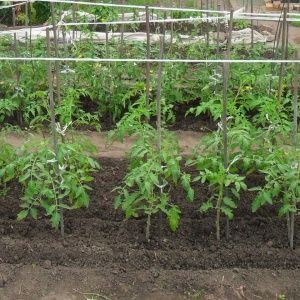 When grown in a greenhouse, tomatoes may lack sunlight. In this case, fluorescent lamps are used.
When grown in a greenhouse, tomatoes may lack sunlight. In this case, fluorescent lamps are used.
Ventilation of the room is carried out daily. If the summer is hot, fans are used.
In the first two weeks after transplanting into open ground, the tomatoes are covered with foil. This will protect immature plants from a cold snap at night.
To protect plants from diseases, pests, frosts and to avoid too rapid evaporation of water, beds mulch hay or straw.
Harvesting and application of the crop
The first fruits of the Miracle Garden variety ripen in July. Their ripeness is determined by their bright red color and glossy skin.
On cold and cloudy days, large green tomatoes are plucked along with the stalk and left to ripen indoors. This will protect the bushes from late blight.
The seeds from the fruit of the Garden Miracle can be used for sowing. They are removed from the pulp and dried. Store in fabric bags.
The miracle of the garden is considered a tomato variety. It is used to prepare processed tomato products and freeze in slices. In general, the fruits are not canned due to their large size.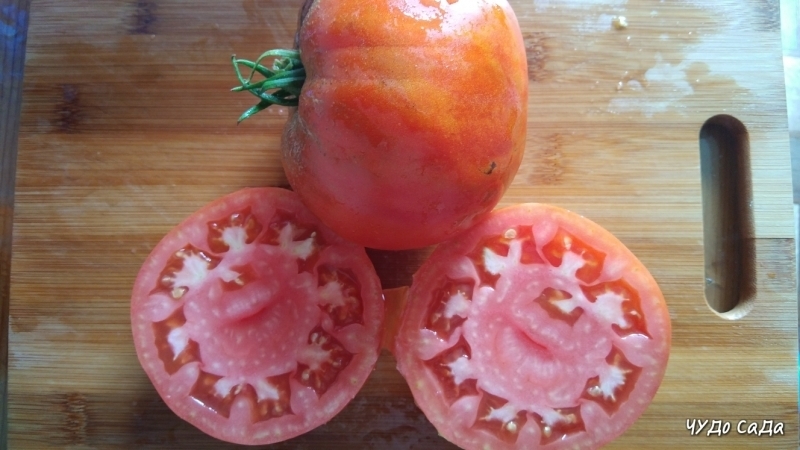
Advantages and disadvantages of the variety
Pros of tomatoes Miracle of the garden:
- large-fruited;
- pleasant sweet taste;
- resistance to tomato diseases;
- a large amount of pulp;
- the possibility of growing in the open field;
- the possibility of growing seeds independently collected from the fruits.
Among the shortcomings, it can be noted the need for garter and pinching... Another disadvantage is that the seeds of this variety are not easy to buy.
Gardeners reviews
Garden Miracle tomatoes have positive reviews from farmers. Those who have tried them at least once grow this variety again.
Vladislav Bogachenkov, Klin: " This year I tried to grow the Miracle of the garden. The result exceeded my expectations. The fruits are huge and delicious. The first two tomatoes on each bush weighed more than a kilogram. The rest were smaller, but also large. There were no problems with leaving. Grew up in a greenhouse. "
Veronika Kotova, Krasnodar: “I have been growing the miracle of the garden for several years. The first seeds were presented by a friend, then she took planting material from her own harvest. An excellent large-fruited and delicious tomato variety. I form part of the plants into one stem, and part into two. The largest berry that I managed to get reached 1365 g. "
Conclusion
The Garden Miracle Tomato will surprise even experienced gardeners. Its fruits are truly gigantic. The taste of these lettuce tomatoes will not disappoint either; it contains both sweetness and slight sourness.
Despite the excellent yield, the Miracle of the garden is an unpretentious variety. No difficulties in his leaving, except for the garter and pinching, were noticed. The only downside is that these beautiful seeds are hard to come by.